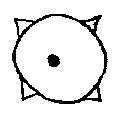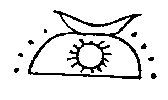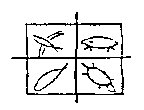Day One. How do you begin the year?
(you can find this post on the Firstday Wiki as well, under history.)
Once there was a teacher who moved to Hong Kong. This is the story of the lessons he taught in the first week of class. In creating these lessons, he stood on the shoulders of a giant of a history teacher. (That's how a lot of stories about great teaching begin, by the way.)
His job was to teach English and History and Religion to a room full of 16 year olds. 80 minutes of every day, they were together.
And this is how it started.
"Our first unit is about Native American Culture. History, Literature, Religion, we'll study all of it. Ready to get started? Good. Here's a story. It’s called the Walam Olum. You need to share your interpretation with the class. Get into pairs or groups of three. You’ve got fifteen minutes."
"Mr. P...there are no words on this handout."
"Oh, right, I left them out. I thought that would force you to be creative. Get started!"
"Mr. P, what about a syllabus?"
"You'll get that later. C'mon, let's go!"
And on the first day, there is Instant Engagement.

After the students have shared their interpretations, and the teacher has shared the "real" story behind the pictures, it gets Personal. As they leave the classroom, they are given a blank non-lined notecard. The teacher looks each of them in the eyes, shakes their hands one by one, and thanks them for coming. "I've got one favor to ask of you. It's important. Please bring this notecard in tomorrow with four pictures that tell your own personal creation story. Oh - and don't put your name on the card."
When the sun rises on the second lesson, the notecards are traded around the room. "On the back of your classmate’s notecard, please write down your interpretation of the story. Then get into groups of four and share your interpretations; the author of the story also gets to share!"
As the class adjourns on Day Two, the students have a good idea of who their peers are, they've been constantly engaged, and they're still not quite sure what this young teacher's deal is.
And if any of them forgot to bring in their homework on day two, they've learned that this guy doesn't assign pointless homework assignments. “If I ask you to bring something in, it's because we NEED it for the lesson. Yes that's right, go sit in that isolated desk until you finish the homework you were supposed to have done.”
Translator’s note: this homework policy is Easier Said Than Done. Many sources indicate that this teacher often is unable to stick to his preferred policy.
On the third day, the teacher finally relents and passes out a piece of paper that says “Syllabus” on the top. The front side looks familiar, with bullet points and a few percentage signs. But the back side is just like everything else that’s happened so far in this class, definitely not what the students are expecting:
Expectations for Each Student Can Be Summarized by the Following Hopi Sayings:
“Don’t Go Around Hurting Each Other”
“Try to Understand Things”
Then the teacher asks another one of those annoyingly open-ended questions: “Try to Understand Things. What skills did we use while we were Trying to Understand the Walam Olum?”
In the following discussion session, the teacher will make sure to touch on the following key points:
Interpretation of text
Collaboration
Primary Source Analysis
A quote from the teacher is relevant here:
“I've used a variation on this activity twice, once each year I taught that course. Since then, I've discovered that the Walam Olum is believed to have been fabricated in the 19th century. And that just makes it better! Just save the truth of the story for later in the unit - how does that shocking revelation not dovetail beautifully with the sad story of 19th century Native American history?!”
<><><>
Folks - anyone have any questions? comments? kudos? ...candy?
Hope you enjoyed the reading, because I loved the writing.
Good Luck Teachers!






|